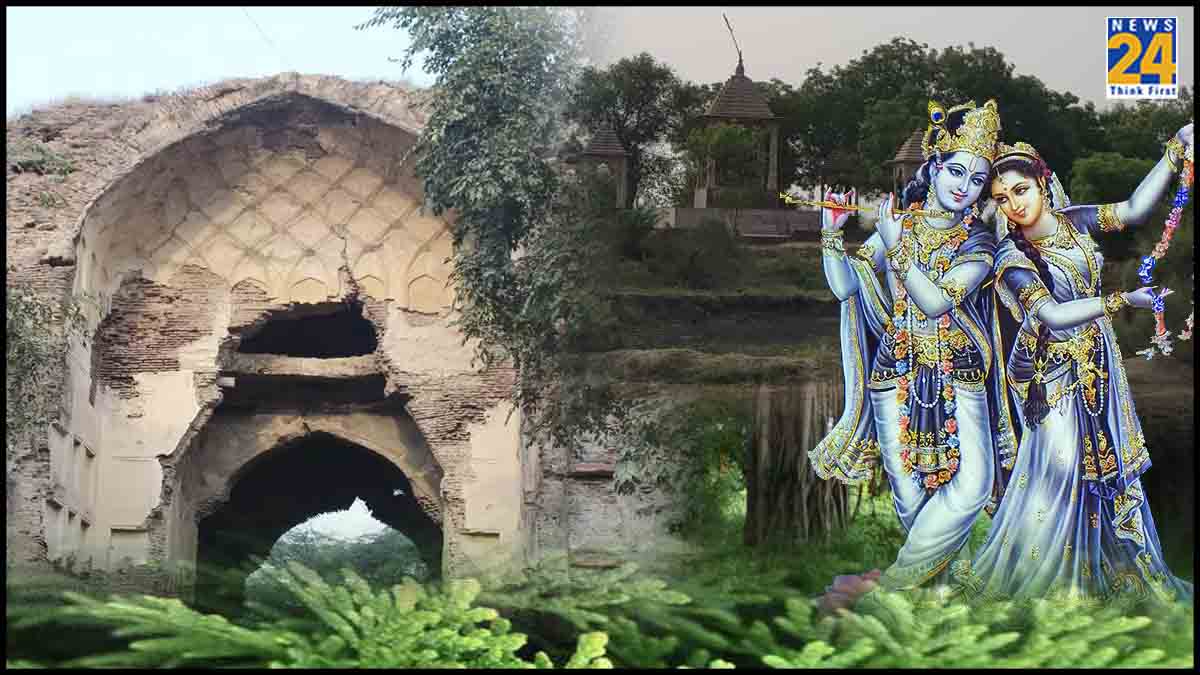– By Brij Khandelwal
Even as doomsday forecasters paint a gloomy future for Mother Earth, scores of labourers and green activists in Vrindavan are toiling in scorching heat to expand the green cover by taking effective steps to counter threats from increasing urbanisation and deforestation that have messed up the local ecology. Before the monsoon rains hit the Sri Krishna land, ground is being prepared for planting lakhs of saplings this year.
A major programme has been launched to revive lost forests and mangroves associated with the Sri Krishna Radha lore.
“Many of the famous forests of Braj mentioned in religious books have disappeared, having fallen prey to the God of modernisation, but recent initiatives to extend the green cover through systematic and planned afforestation holds hope for the future,” says Jagan Nath Poddar, convener of Friends of Vrindavan.
The mother of all local forests, the Sauribh Van, spread over more than 125 hectares will change the vast wasteland along the Yamuna river, into a spiritually replenishing green cover, say the Sri Krishna devotees.
A joint project of the MVDA (Mathura Vrindavan Development Authority), the UP state Forest department, and the Braj Teerth Vikas Board, this green initiative will fundamentally alter the ecology of the Braj area, worshipped as the Leela Bhoomi of Sri Krishna-Radha. In the recent past, the locals had raised an alarm at the increasing inroads by urban developers who have concretized every inch of available land in the holy town. The legendary forests of Braj, have disappeared. According to Braj Bhakti Vilas, there were 137 forests, including 12 Vans, 12 Prativans, 12 Upvans, 12 Adhivans. Only 37 have so far been identified. Of these four heritage forest areas have been chosen namely Goverdhan, Kotvan, Kokilavan, and Nandgaon, for concerted conservation work.
In the course of development, the lush green mangroves, the wetlands, and the dense forests where Sri Krishna with Gops and Gopikas frolicked have fallen prey to senseless urban expansion. Old-timers recall that the tiny town of temples was surrounded by dense forest cover and there were over a dozen gardens. Unfortunately, most Bagichas and Dharamshalas have been sold off to builders.
A decade ago, Vrindavan’s population was only around 65,000 but now it has crossed over a lakh. To add to the environmental woes, the holy town is visited by more than ten million pilgrims annually. To cater to the needs of these visitors, the town is dotted with inns, hotels, eateries, and a variety of Ashrams. All roads have been tarred, pavements concretized and instead of trees, only cement structures seem to grow over green patches and ponds.
The tallest Sri Krishna temple in the world by ISKCON, is also coming up on the Chhatikara road which has a dozen posh ashrams and temples.
Against this dismal landscape the initiative of the vice chairman of the Braj Teerth Vikas Parishad, Shailja Kant Mishra, and the Mathura district forest officer Rajnikant Mittal, to green the shrines of Sri Krishna in Braj as also Vrindavan to restore its past glory, is being widely appreciated. Called Saubhari Van, after the sage Saubhari rishi, already lakhs of saplings have been planted in the sprawling forest area cleared of all encroachments and fenced with barbed wire to protect from wild animals. Last year’s flood however took a heavy toll on saplings, almost 25 percent perished as the whole forest area was inundated.
The project includes the construction of huge ponds for treating drain water. The Kosi Canal discharges huge quantities of effluents from Haryana, directly into the river. This wastewater would now be diverted into a vast pond, treated, and then directed towards the river. The city forest will also have a religious site called Kali Dah, now under construction. The story goes that the king of snakes Kali who lived in the Yamuna river, was forced to quit after a grim duel with little Sri Krishna.
The DFO said it was in December 2023 that the Ancient Forest Rejuvenation Project was announced to protect the local flora. “The project prioritises identification of various forests of Braj mentioned in the scriptures, and drawing up strategies to protect them,” Rajnikant Mittal said.
The first major task in developing biodiversity forests in this area is to clear Vilayati Babool (Prosopis juli flora) the most invasive and self-propagating species. The whole of the Taj Trapezium Zone is afflicted with this thorny menace.
Forest department officials said once the Saubhri Van was ready, a second city forest would be developed on the Mathura-Vrindavan Road. Called Ahilyaganj Reserve Forest, presently it is in bad shape due to large-scale encroachments.
The Mathura Forest department is trying to preserve the local species cherished or loved by Sri Krishna. So far 26 such species have been identified, including peepal, kadamb, banyan, and imli, believed to have been witnesses to the leelas of Sri Krishna. Some of the 100-year-old trees have been tagged as heritage trees.
Also by the author – Agra’s Monumental Heritage Is A Victim Of Political Apathy













